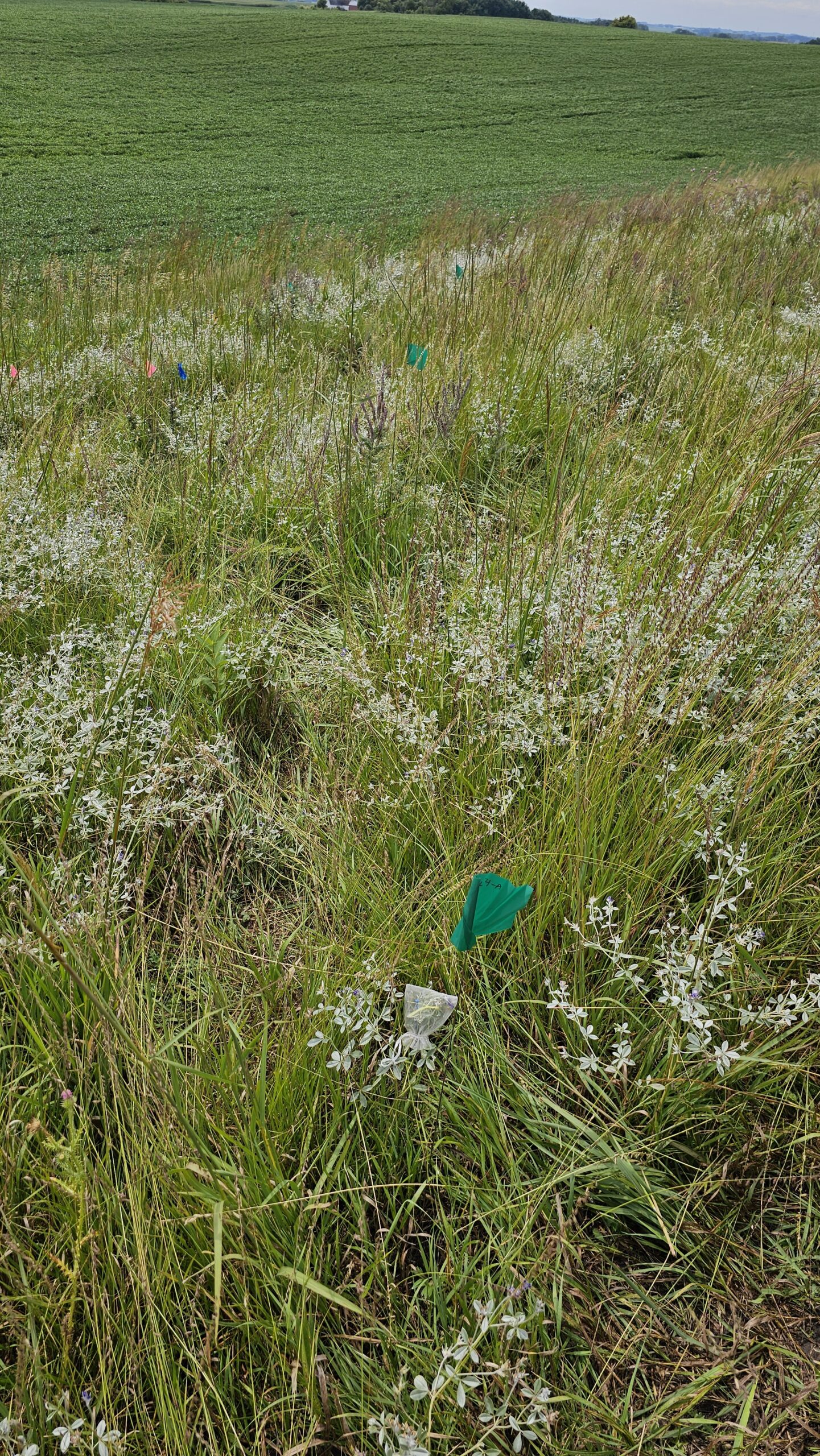In past years team echinacea has noticed that silverleaf scurfpea very rarely produces a seed. Some would estimate over ninety percent of the time the pod contains no seed. This brings about many questions concerning why sliverleaf scurfpea produces so few seeds. The focus of this experiment is to get an idea of whether or not the problems related to going to seed are pollination related?
The first step of the experiment was to was to look at the sliverleaf scurfpea’s flowers under a microscope to see if the flowers were producing pollen and see if it was possible to cross pollinate such a small flower in the field. The flowers of the sliverleaf scurfpea were producing pollen and with some experimentation I found a way to effectively cross pollinate the flowers. I found that the best way to get the pollen out out of the flowers was to use a dark colored toothpick and gently open the petals of the flower so that the anthers are more visible. following that I would lightly brush the anthers with the toothpick so that it would collect the pollen. I would then gently open the petals of the other flower and bush the toothpick over the stigma.
The second phase of the experiment included going out into the field and cross pollinating the silverleaf scurfpea. This took place at the site Nice Island on July 24th and July 31st of 2024. The plants were chosen at random and each plant was over 20 meters away from the plant it was being crossed with. On each plant two flowers were randomly chosen. One as the flower that would be crossed, identified by a blue twist tie, and the other as a control variable, identified by a yellow twist tie. Following the cross pollination both twist tied flowers were covered in a pollinator exclusion bag. This was repeated for 6 different silverleaf scurfpea plants at Nice Island. Each plant involved in the silverleaf scurfpea experiment was marked using a green flag.
This work sets the team up for the final step of the experiment. The final step will be to return to the cross pollinated plants in about 2-3 weeks and see if the pods that were pollinated produced a seed. This can be done by squeezing the pods. The pod will either contain a seed or not contain a seed.




Leave a Reply